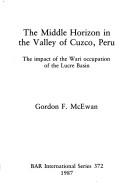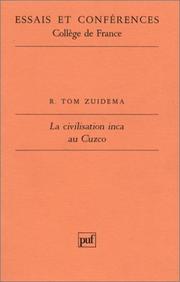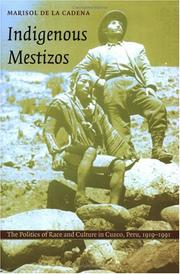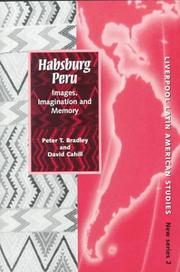| Listing 1 - 10 of 10 |
Sort by
|
Book
ISBN: 1139962655 1108078788 Year: 2015 Publisher: Cambridge : Cambridge University Press,
Abstract | Keywords | Export | Availability | Bookmark
 Loading...
Loading...Choose an application
- Reference Manager
- EndNote
- RefWorks (Direct export to RefWorks)
Clements R. Markham (1830-1916) began his career in the Royal Navy, sailing to South America, learning Spanish, and participating in the Arctic search for Sir John Franklin. In 1852, determined to succeed as an explorer and geographer, he travelled to Peru and visited the site of the ancient city of Cuzco, previously little known in Europe. Published in 1856, this is Markham's lively account of his travels. In his description of arriving in Panama we see a picture of the mid-nineteenth-century eagerness to explore (or exploit) Latin America. Markham's stay in Cuzco allowed him ample time to study the ruins and research the lost Inca civilisation, and also gave him his introduction to the properties of the cinchona plant, a source of quinine, which he later returned to collect and introduce to India, as described in his 1862 Travels in Peru and India (also reissued in the Cambridge Library Collection).
Markham, Clements R. --- Travel --- Lima (Peru) --- Cuzco (Peru) --- Description and travel. --- Markham, Clements Robert, --- Cusco (Cuzco, Peru) --- Qosqo (Peru) --- Cosco (Peru) --- Cozco (Peru) --- Cusco (Peru) --- Ciudad de los Reyes (Peru) --- Chorrillos (Peru)
Book
ISBN: 9004233873 9004233857 Year: 2012 Publisher: Boston : Brill,
Abstract | Keywords | Export | Availability | Bookmark
 Loading...
Loading...Choose an application
- Reference Manager
- EndNote
- RefWorks (Direct export to RefWorks)
The historical narratives of the Inca dynasty, known to us through Spanish records, present several discrepancies that scholarship has long attributed to the biases and agendas of colonial actors. Drawing on a redefinition of royal descent and a comparative literary analysis of primary sources, this book restores the pre-Hispanic voices embedded in the chronicles. It identifies two distinctive bodies of Inca oral traditions, each of which encloses a mutually conflicting representation of the past that, considered together, reproduces patterns of Cuzco’s moiety division. Building on this new insight, the author revisits dual representations in the cosmology and ritual calendar of the ruling elite. The result is a fresh contribution to ethnohistorical works that have explored native ways of constructing history.
Incas --- Inca cosmology --- Inca calendar --- Inca Indians --- Indians of South America --- Calendar, Inca --- Calendar --- Cosmology, Inca --- Cosmology --- Historiography. --- Kings and rulers. --- Cuzco (Peru) --- Cusco (Cuzco, Peru) --- Qosqo (Peru) --- Cosco (Peru) --- Cozco (Peru) --- Cusco (Peru) --- History

ISBN: 086054480X Year: 1989 Volume: vol 372
Abstract | Keywords | Export | Availability | Bookmark
 Loading...
Loading...Choose an application
- Reference Manager
- EndNote
- RefWorks (Direct export to RefWorks)
-Hauri Indians --- -Peru --- Hauri Indians --- Excavations (Archaeology) --- Indians of South America --- American aborigines --- American Indians --- Indigenous peoples --- Archaeological digs --- Archaeological excavations --- Digs (Archaeology) --- Excavation sites (Archaeology) --- Ruins --- Sites, Excavation (Archaeology) --- Archaeology --- Antiquities --- Ethnology --- Cuzco (Peru) --- Peru --- Cusco (Cuzco, Peru) --- Qosqo (Peru) --- Cosco (Peru) --- Cozco (Peru) --- Cusco (Peru) --- Antiquities.
Book
ISBN: 0252051645 0252042786 0252084616 9780252051647 9780252042782 9780252084614 Year: 2020 Publisher: Urbana
Abstract | Keywords | Export | Availability | Bookmark
 Loading...
Loading...Choose an application
- Reference Manager
- EndNote
- RefWorks (Direct export to RefWorks)
Drawing on a year of qualitative on-site research, Krista E. Van Vleet offers a rich ethnography of a group of young mothers in residential care in Peru. She pays particular attention to the moral entanglements that emerge via people's efforts to provide care amid the inequalities and insecurities of today's Peru. State and nonstate participants involved in the women's intimate lives influence how the women see themselves as mothers, students, and citizens. Both deserving of care and responsible for caring for others, the young women must navigate practices interwoven with a range of racial, gendered, and class hierarchies. Groundbreaking and original, Hierarchies of Care highlights the moral engagement of young women seeking to understand themselves and their place in society in the presence of circumstances that are both precarious and full of hope.
Teenage mothers --- Mother and child --- Child and mother --- Mother-child relationship --- Mothers and children --- Parent and child --- Adolescent mothers --- School-age mothers --- Schoolgirls as mothers --- Mothers --- Teenage parents --- Social conditions --- Cuzco (Peru) --- Cusco (Cuzco, Peru) --- Qosqo (Peru) --- Cosco (Peru) --- Cozco (Peru) --- Cusco (Peru) --- Since 1968

ISBN: 2130396798 Year: 1985 Publisher: Paris : Presses universitaires de France,
Abstract | Keywords | Export | Availability | Bookmark
 Loading...
Loading...Choose an application
- Reference Manager
- EndNote
- RefWorks (Direct export to RefWorks)
Incas --- Indians of South America --- Indiens d'Amérique --- Social life and customs --- History --- Moeurs et coutumes --- Histoire --- Cuzco (Peru) --- Cuzco (Pérou) --- American aborigines --- American Indians --- Indigenous peoples --- Ethnology --- Cusco (Cuzco, Peru) --- Qosqo (Peru) --- Cosco (Peru) --- Cozco (Peru) --- Cusco (Peru) --- Social life and customs. --- History. --- Incas. Civilisation. --- Inka's. Cultuur. --- Indiens --- Cuzco (Pérou) --- Cuzco (Pérou ; région) --- Pérou --- Religion --- Jusqu'à 1500 --- Conditions sociales --- Civilisation
Book
ISBN: 2222029139 2821845200 Year: 1981 Publisher: Institut français d’études andines
Abstract | Keywords | Export | Availability | Bookmark
 Loading...
Loading...Choose an application
- Reference Manager
- EndNote
- RefWorks (Direct export to RefWorks)
Regional planning --- Cuzco (Peru) --- Cuzco (Peru : Dept.) --- Economic conditions --- Geography --- Regions & Countries - Americas --- Business & Economics --- History & Archaeology --- Latin America --- Economic History --- Regional development --- State planning --- Human settlements --- Land use --- Planning --- City planning --- Landscape protection --- Government policy --- Cuzco (Peru : Department) --- Economic conditions. --- Geography. --- Cusco (Cuzco, Peru) --- Qosqo (Peru) --- Cosco (Peru) --- Cozco (Peru) --- Cusco (Peru) --- Cuzco (Peru : Region) --- Región de Cusco (Peru) --- Cusco (Peru : Department) --- Qosqo (Peru : Department) --- espace urbain --- histoire --- Cuzco --- Pérou

ISBN: 0822324202 0822323850 9780822324201 9780822323853 Year: 2003 Publisher: Durham Duke University Press
Abstract | Keywords | Export | Availability | Bookmark
 Loading...
Loading...Choose an application
- Reference Manager
- EndNote
- RefWorks (Direct export to RefWorks)
In the early twentieth century, Peruvian intellectuals, unlike their European counterparts, rejected biological categories of race as a basis for discrimination. But this antiracist ideology did not eliminate social hierarchies; instead, it redefined racial categories as cultural differences, such as differences in education or manners. In "Indigenous Mestizos", Marisol de la Cadena traces the history of the notion of race from this turn-of-the-century definition to a current denial of the definition's scientific validity. De la Cadena's ethnographically and historically rich study examines how indigenous citizens of the city of Cuzco have been conceived by others as well as how they have viewed themselves and places these conceptions within the struggle for political identity and representation.Demonstrating that the terms Indian and mestizo are complex, ambivalent, and influenced by social, legal, and political changes, she provides close readings of everyday concepts such as marketplace identity, religious ritual, grassroots dance, and popular culture, as well as of such common terms as respect, decency, and education. She shows how Indian has come to mean an indigenous person without economic and educational means - one who is illiterate, impoverished, and rural. Mestizo, on the other hand, has come to refer to an urban, usually literate, and economically successful person claiming indigenous heritage and participating in indigenous cultural practices.De la Cadena argues that this version of de-Indianization - which, rather than assimilation, is a complex political negotiation for a dignified identity - does not cancel the economic and political equalities of racism in Peru, although it has made room for some people to reclaim a decolonised Andean cultural heritage. This highly original synthesis of diverse theoretical arguments brought to bear on a series of case studies will be of interest to scholars of cultural anthropology, post-colonialism, race and ethnicity, gender studies, and history, in addition to Latin Americanists.
Mestizos --- Indians of South America --- Racism --- #SBIB:39A74 --- #SBIB:39A6 --- Bias, Racial --- Race bias --- Race prejudice --- Racial bias --- Prejudices --- Anti-racism --- Race relations --- American aborigines --- American Indians --- Indigenous peoples --- Eurindians (Latin America) --- Hispano-Indians (Latin America) --- Mestiços --- Indians --- Latin Americans --- Racially mixed people --- Social conditions. --- Mixed descent --- Etnografie: Amerika --- Etniciteit / Migratiebeleid en -problemen --- Ethnology --- Cuzco (Peru) --- Social conditions --- Critical race theory --- Cusco (Cuzco, Peru) --- Qosqo (Peru) --- Cosco (Peru) --- Cozco (Peru) --- Cusco (Peru) --- Mestizos - Peru - Cuzco - Social conditions --- Indians of South America - Mixed descent - Peru - Cuzco --- Racism - Peru - Cuzco --- Cuzco (Peru) - Social conditions
Book
ISBN: 9972511006 2821844549 Year: 2015 Publisher: Lima : Institut français d’études andines,
Abstract | Keywords | Export | Availability | Bookmark
 Loading...
Loading...Choose an application
- Reference Manager
- EndNote
- RefWorks (Direct export to RefWorks)
Entre las muchas páginas aún desconocidas de nuestra historia, figura el tema de cómo se vivió más allá de Lima, el bullente nacimiento de la república peruana. Valiéndose del estudio de los periódicos del Cuzco desde los primeros años de la Independencia, hasta el final de la confederación peruano boliviana, el historiador Luis Miguel Glave, logra reconstruir con brillantez cómo se fue abordando en la que fuera la última capital virreinal, la idea de patria, de región, de identidad; en cierto sentido, como él mismo lo señala, cómo nos fuimos inventando y reconociendo como miembros de una de esas novísimas comunidades políticas que habían adoptado el nombre de "repúblicas" (por contraste al modelo de las "monarquías", más asentadas en el momento). El estudio de aquellos periódicos, los más de ellos de efímera vida, con nombres como "El cocacho", "El fiera-bras", "El duende" o "El triunfo de la libertad", permiten conocer la vida cotidiana de la que entonces era la segunda o tercera ciudad del Perú, agitada por las pasiones políticas de los caudillos regionales y por los deseos de una élite intelectual por forjar un proyecto de futuro para una región que, como muchas otras de América Latina, se embarcaba en un destino histórico casi sin antecedentes.
Press --- Identity (Psychology) --- Nationalism --- History --- Cuzco (Peru) --- Peru --- Press coverage --- Personal identity --- Personality --- Self --- Ego (Psychology) --- Individuality --- Media, News --- Media, The --- News media --- Journalism --- Publicity --- Newspapers --- Periodicals --- Bīrū --- Dēmokratia tou Perou --- Gweriniaeth Periw --- Jumhūrī-i Purū --- Jumhūrīyat Bīrū --- Lýðveldið Peru --- Pearu --- Peiriú --- Periw --- Pérou --- Peru ka Fasojamana --- Perú Kiōng-hô-kok --- Peru Respublikası --- Perua Respubliko --- Peruánská republika --- Peruko Errepublika --- Perun tasavalta --- Peruo --- Peruu --- Peruu Vabariik --- Pheroo --- Piru --- Piruw --- Piruw Suyu --- Pobblaght ny Peroo --- Purū --- Republic of Peru --- República del Perú --- Republica di u Perù --- República do Perú --- República Peruana --- Republiek van Peru --- Republik Peru --- Republika Peru --- Republikken Peru --- République du Pérou --- Rėspublika Peru --- Περού --- Δημοκρατία του Περού --- Рэспубліка Перу --- Република Перу --- Перу --- بيرو --- جمهورية بيرو --- پرو --- ペルー --- Peru-Bolivian Confederation --- Cusco (Cuzco, Peru) --- Qosqo (Peru) --- Cosco (Peru) --- Cozco (Peru) --- Cusco (Peru) --- Cuzco --- indépendance --- politique --- presse --- Pérou --- recherche scientifique --- XIXe siècle
Book
ISBN: 0813046327 0813045096 9780813045092 9780813044330 0813044332 9780813046327 Year: 2013 Publisher: Gainesville University Press of Florida
Abstract | Keywords | Export | Availability | Bookmark
 Loading...
Loading...Choose an application
- Reference Manager
- EndNote
- RefWorks (Direct export to RefWorks)
An examination of the archaeological data on the Inka capital of Cusco through the lens of urban planning.
Human settlements --- Urbanization --- City planning --- Cities and towns --- Habitat, Human --- Human habitat --- Settlements, Human --- Human ecology --- Human geography --- Population --- Sociology --- Land settlement --- Cities and towns, Movement to --- Urban development --- Urban systems --- Social history --- Sociology, Rural --- Sociology, Urban --- Urban policy --- Rural-urban migration --- Civic planning --- Land use, Urban --- Model cities --- Redevelopment, Urban --- Slum clearance --- Town planning --- Urban design --- Urban planning --- Land use --- Planning --- Art, Municipal --- Civic improvement --- Regional planning --- Urban renewal --- Global cities --- Municipalities --- Towns --- Urban areas --- Government policy --- Management --- Cuzco (Peru) --- Cusco (Cuzco, Peru) --- Qosqo (Peru) --- Cosco (Peru) --- Cozco (Peru) --- Cusco (Peru) --- Social conditions. --- Inca architecture --- Excavations (Archaeology) --- Incas --- Architecture inca --- Fouilles (Archéologie) --- Etablissements humains --- Antiquities --- Social life and customs --- Antiquités --- Moeurs et coutumes --- Cuzco (Pérou) --- Conditions sociales

ISBN: 1781386692 1846313260 9781846313264 9781781386699 9780853239147 0853239142 Year: 2000 Publisher: Liverpool Liverpool University Press
Abstract | Keywords | Export | Availability | Bookmark
 Loading...
Loading...Choose an application
- Reference Manager
- EndNote
- RefWorks (Direct export to RefWorks)
The reception of the 'discovery', conquest and colonisation of Spanish America spawned a rich imaginative literature. The case studies presented in this book represent two distinct types of imagining by two diametrically different groups: literate, and in some cases erudite Europeans, and a vanquished native nobility. The former endeavoured to make sense of Spain's (and Portugal's) 'marvellous possessions' in the New World with the limited conceptual tools at their disposal, the latter to construct a colonial identity based on their shared ancestral memory while incorporating elements from the even more wondrous Hispanic culture that had overwhelmed them.
Public opinion --- Visitors, Foreign --- British --- Incas --- Inca Indians --- Indians of South America --- British people --- Britishers --- Britons (British) --- Brits --- Ethnology --- Foreign visitors --- Foreigners --- Foreigners, Visiting --- International visitors --- Visiting foreigners --- Travelers --- Exchange of persons programs --- Opinion, Public --- Perception, Public --- Popular opinion --- Public perception --- Public perceptions --- Judgment --- Social psychology --- Attitude (Psychology) --- Focus groups --- Reputation --- History. --- Attitudes. --- Social life and customs --- Peru --- Spain --- Bīrū --- Dēmokratia tou Perou --- Gweriniaeth Periw --- Jumhūrī-i Purū --- Jumhūrīyat Bīrū --- Lýðveldið Peru --- Pearu --- Peiriú --- Periw --- Pérou --- Peru ka Fasojamana --- Perú Kiōng-hô-kok --- Peru Respublikası --- Perua Respubliko --- Peruánská republika --- Peruko Errepublika --- Perun tasavalta --- Peruo --- Peruu --- Peruu Vabariik --- Pheroo --- Piru --- Piruw --- Piruw Suyu --- Pobblaght ny Peroo --- Purū --- Republic of Peru --- República del Perú --- Republica di u Perù --- República do Perú --- República Peruana --- Republiek van Peru --- Republik Peru --- Republika Peru --- Republikken Peru --- République du Pérou --- Rėspublika Peru --- Περού --- Δημοκρατία του Περού --- Рэспубліка Перу --- Република Перу --- Перу --- بيرو --- جمهورية بيرو --- پرو --- ペルー --- Peru-Bolivian Confederation --- Espagne --- Espainiako Erresuma --- España --- Espanha --- Espanja --- Espanya --- Estado Español --- Hispania --- Hiszpania --- Isupania --- Kingdom of Spain --- Regne d'Espanya --- Reiaume d'Espanha --- Reino de España --- Reino d'Espanya --- Reinu d'España --- Sefarad --- Sepharad --- Shpanie --- Shpanye --- Spanien --- Spanish State --- Supein --- イスパニア --- スペイン --- Politics and government --- Colonies --- Public opinion. --- Social conditions --- Cuzco (Peru) --- Foreign public opinion, British --- Description and travel. --- Cusco (Cuzco, Peru) --- Qosqo (Peru) --- Cosco (Peru) --- Cozco (Peru) --- Cusco (Peru) --- Description and travel
| Listing 1 - 10 of 10 |
Sort by
|

 Search
Search Feedback
Feedback About UniCat
About UniCat  Help
Help News
News